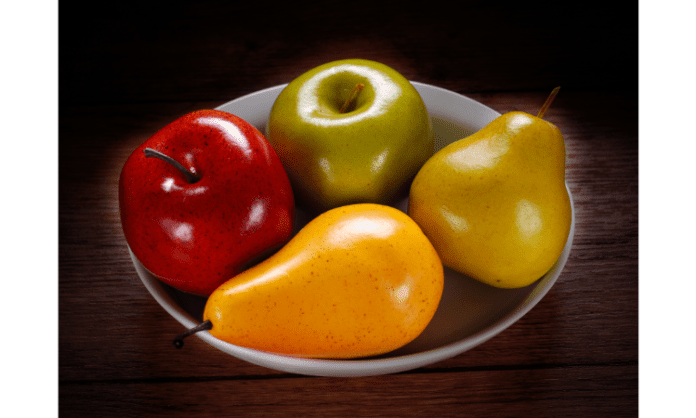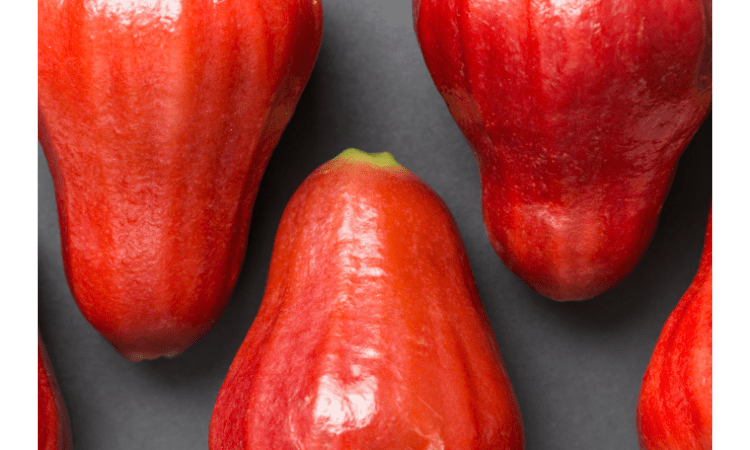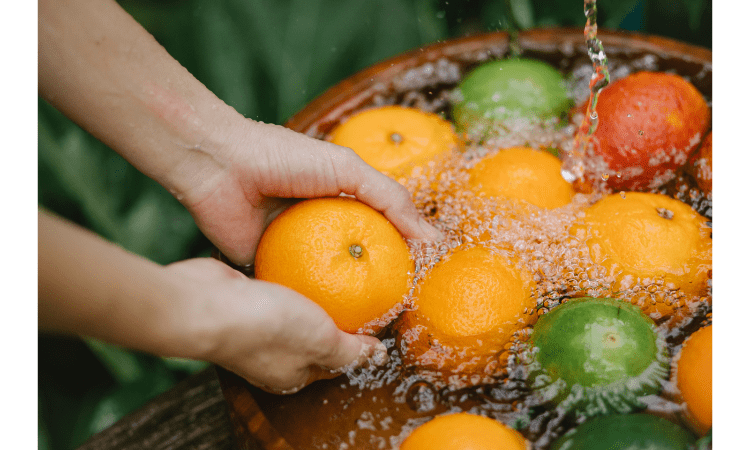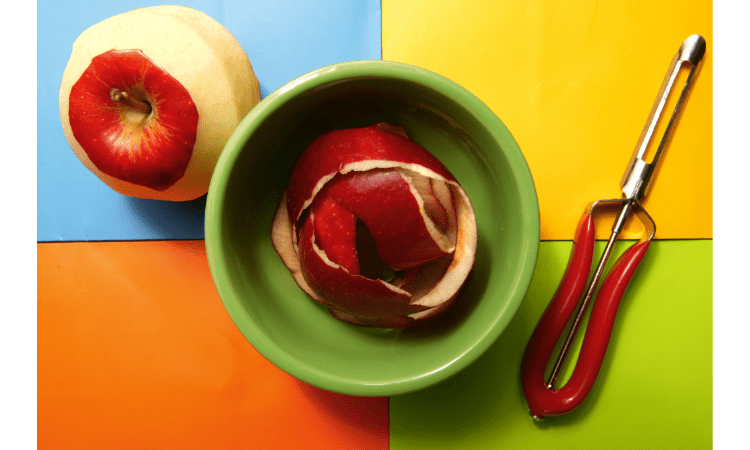
Wax coated fruits like apples and grapes often look shiny, luscious, and delectable. But are they really healthy? There has been much controversy regarding the wax that is used to coat these fruits, but many consumers believe that it is healthy because the coating results in a longer shelf life for fruits. But if you care about your health, then you’d better read this article and find out the disadvantages and some guidance to consider before purchasing fruits that have been covered with wax.
What Is Wax Coating On Fruits And Vegetables?

Wax coating on fruits and vegetables is a wax-like substance that is applied to the surface of some fruits and vegetables. The purpose of this layer is to make the fruit or vegetable look better, last longer, and keep it from drying out. Wax also helps keep bugs away from the produce. Wax coating is a thin layer of coat that is applied to the outer surface of fruits and vegetables. This layer protects the fruit or vegetable from moisture loss and contamination when it’s being shipped from one location to another.
Wax layer on fruits and vegetables is made using natural products like carnauba wax, beeswax, candelilla coat, and shellac—all of which come from plants or insect secretions. Carnauba wax comes from a Brazilian palm tree called Copernicia prunifera which produces seeds called “copers”. Candelilla wax comes from an acacia plant native to Mexico called Anadenanthera colubrina or muñeca de muerto (Spanish for “dead girl”). Beeswax comes from bees that make honeycombs out of hexagonal cells with six sides; each cell has a small hole in the bottom where bees store their honey. Shellac comes from lac beetles that make their cocoons out of tree bark; when they are ready to hatch their eggs into larvae, they chew through their cocoon so they can escape into the world!
Why Fruit Has a Fake Wax Coating?

The reason fruit has a wax coating is because of the nature of the food industry. Fruit is harvested at different times and places, transported to various countries, and then sold at grocery stores. Because it’s not possible to have fresh produce shipped directly from a farm to a store, it’s necessary to preserve the fruit so that it will still taste good when it reaches its destination. Waxing helps prevent moisture loss and helps protect against damage by pests or insects.
There are two types of wax: natural and artificial. Natural waxes are made from beeswax or carnauba wax; artificial ones are derived from petroleum products like paraffin or candelilla coats. Waxing is done before fruits are packaged for sale because it helps them keep their shape during shipping and storage by preventing air from getting inside through cracks in the skin (which could cause mold growth). In addition, the coating helps keep food fresh longer by reducing moisture loss through evaporation during storage – which means fewer spoilage problems in your refrigerator!
Is Wax coating actually harmful to fruits?

Wax coating on fruits like apples is not harmful. It is used to help preserve the freshness of the fruit. Wax layer prevents oxygen from getting to the fruit, which helps prevent degradation and keeps it from spoiling. The wax also prevents moisture loss, and it creates a protective barrier around the skin of the fruit, preventing it from drying out and cracking.
There are different kinds of waxes that are used for different purposes, such as beeswax for apple coatings, carnauba wax for banana, shellac for citrus coatings, candelilla wax for kiwi, paraffin wax for mango coatings—and more!
Since apples are coated with a vegetable-based wax that is nontoxic and non-GMO (genetically modified organism), there should be no worry about eating them with your favorite fall dish or dessert recipe.
According to the U.S. Food and Drug Administration, in rare instances that wax layer could contain shellac, a resin secreted by the female lac bug, Kerria lacca.
In rare instances that wax layer could contain shellac, a resin secreted by the female lac bug, Kerria lacca. Shellac is used in many industries including the cosmetic industry, woodworking industry, and food industry.
Shellac is used in both natural and synthetic forms. The natural source of shellac comes from a small insect called “lac bug” which lives on trees in India and Thailand. It secretes its resin as it feeds on sap from trees; this production process takes 7-8 days after which it has created enough to make its own exoskeleton waterproof so it can walk away when they hatch! This is why we call this bug “lac bugs.”
This is the same material used to make a glossy finish on hard candies such as jelly beans and some chocolates.

When it comes to the safety of food-grade shellac, there is no evidence that this substance is harmful. This is the same material used to make a glossy finish on hard candies such as jelly beans and some chocolates.
In fact, many people consume these foods every day without any adverse effects. However, the main concern with shellac coating lies in whether or not it poses any potential health risks due to its potential chemical composition.
Commonly used paraffin wax coatings on fruits like apples are generally edible, but they are still not ideal.

Wax coatings on fruits and vegetables are generally edible, but they are still not ideal. Paraffin wax is a petroleum-based product that can be dangerous if heated to extreme temperatures. However, it’s not toxic in small doses and as long as you don’t breathe too deeply while eating your apples with wax layer on them, you’ll probably be okay.
Paraffin wax is not necessary for preservation purposes either—it just allows for a longer shelf life of the fruit or vegetable in question. In fact, some people actually claim that paraffin wax makes food taste worse because it blocks some natural flavors from coming through!
If this worries you at all, there are ways to remove the paraffin from your apples (and other fruits and veggies) using household items like lemon juice or vinegar (which works best when combined with another solution). You can also try picking off the outer layer of skin until you reach flesh free from contamination!
Also Read: 11 foods that you should never put in the fridge
They are made out of petroleum products and may contain toxic solvents that were used to cut down on costs during manufacturing.
Paraffin wax is made from petroleum products. These are also the same ingredients that make up a lot of cosmetics and household cleaners. They can be harmful to your health because they include toxic solvents that were used in the manufacturing process to cut down on cost.
Paraffin wax is not a natural product, which means it will likely have been chemically modified at some point in its life cycle. The chemicals used in this process might be harmful to your health if ingested or absorbed through the skin over long periods of time. You should avoid eating any food items covered with this substance if possible, as well as any other food items that contain paraffin wax as an ingredient (such as candy).
Some fruits have a natural wax coating, including grapes and apples—but it’s not enough for long-term storage.

Some fruits have a natural wax coating, including grapes and apples—but it’s not enough for long-term storage.
Other fruits have a natural wax coating, including grapes and apples—but it’s not enough for long-term storage.
So when you see fruits or vegetables with a waxy coating, it means that someone has added extra wax or a similar synthetic substance for preservation purposes.
Wax coating on fruits and vegetables is used to protect the produce from dehydration. It helps keep them fresh longer, not just look appealing. The wax layer can even help improve the taste of some fruits and vegetables by giving them a natural, healthy sheen and making them more resistant to bruising and scratching.
How to remove wax from fruits like apple
If you want to remove the wax coating from your fruit, there are a few methods that could work.

- Wash the fruit in water. This is the most obvious solution and probably what your mother would suggest when you asked her how to remove wax from fruits like apples. It’s a good idea to wash the apples in warm water before peeling them, as it will make the process easier and less stressful for both you and your apple!

- Use a vegetable peeler to remove wax coating from fruits like apples: A simple peeler can also be used for this purpose if you don’t have any other alternatives available at home or work (but don’t forget about safety precautions). You should start by applying some pressure towards one end of each slice then move slowly along its length until all sides are exposed fully without cutting through its fleshy interior tissue layer – otherwise known as “core”/”cortex”.
Conclusion

We hope you learned a little more about apples and their natural wax coating.
Wax coating on fruits like apples is not harmful as long as you do not eat the wax. The wax is there to keep the fruit from drying out, and it cannot be digested by humans.
We also understand that some people may be concerned about the fact that there is an unhealthy coating on fruits like apples. However, we wanted to make sure that everyone understands why this is done and how it can affect them (or not). If you have any questions or comments about wax layer on fruits like apples then please leave them below! Thanks!











